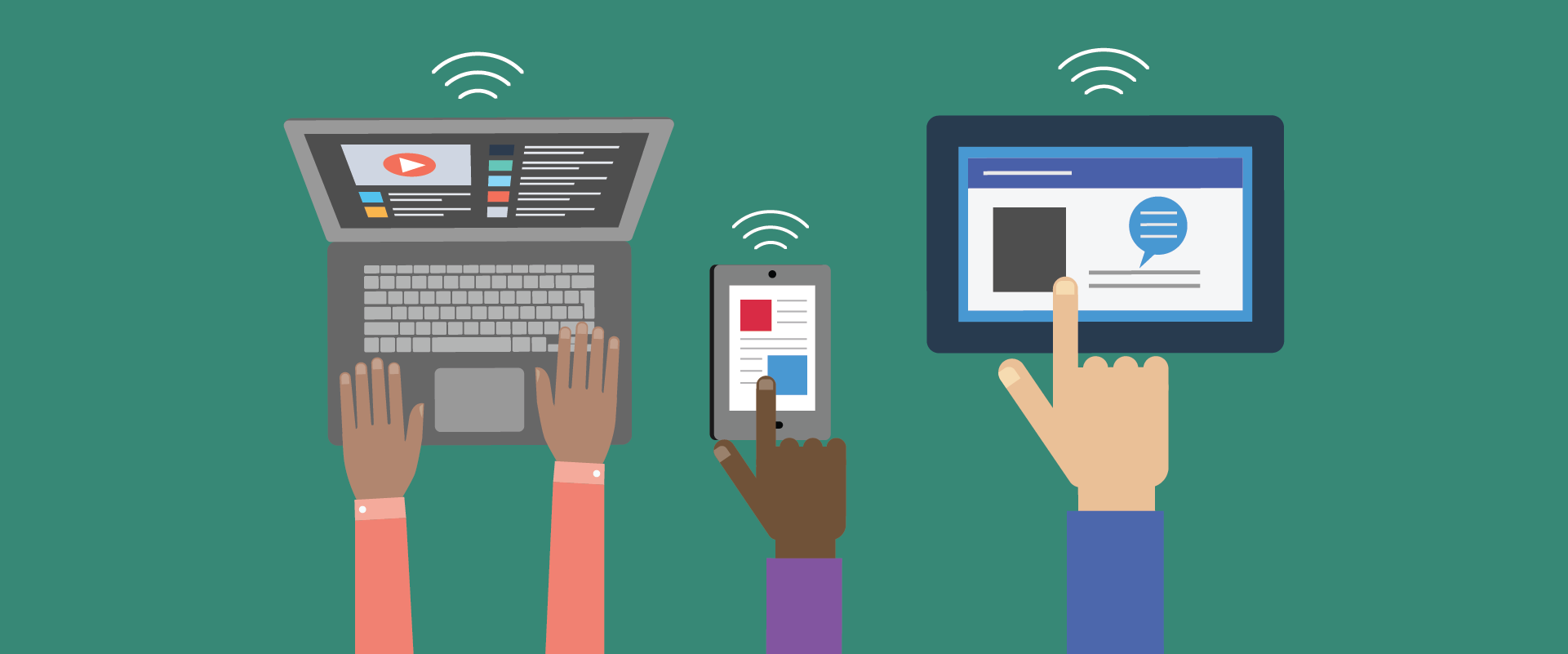
There are three parts to the Digital Learning Gap: technology and access, participation, and powerful use. Digital technology enhances teaching and learning only when teachers and students have adequate and consistent access to high-speed internet and quality learning tools. Schools with reliable, ubiquitous access to the internet and digital tools have the greater potential to design more personalized and equitable content and instruction. Students in such schools can have a greater chance to be more engaged in learning, take ownership of their learning, set their own pace, and collaborate with educators and peers within and outside their school and district1.
But having technology and access at school is only half the battle. To close the digital learning gap, we must make sure that students have access to technology and high-speed internet outside of school.
Furthermore, edtech integration goes beyond connecting schools to high-speed internet and featuring 1:1 computing classrooms. It also includes promoting responsible technology use. All students need to learn how to navigate the digital world safely and in an appropriate manner that helps them succeed in school, work, and life. Digital citizenship is a wide-ranging topic and can encompass a variety of concepts and actions. A few examples of digital citizenship include understanding your digital footprint, learning to type, avoiding hateful speech or cyberbullying while conversing with others online, and committing to not illegally using any content.
An effective edtech integration system also protects student data and privacy. While the use of student data is critical for designing personalized learning and formative feedback, this should happen under written policies that include parental understanding and consent, the terms of responsible use, and consequences for misuse2.
Additionally, high-quality edtech integration should provide ubiquitous access for students and teachers at any time and from any place. Students have fewer barriers to engagement and learning when they can use their digital learning resources outside of school not only to complete their homework, but to explore topics that interest them, work on independent projects, and connect with their peers and teachers3.
We must look beyond a binary view of access that only considers whether a student has it or not to a more accurate measurement taking under-connection into account. For many U.S. families, home access is still limited to a smartphone with a data plan. According to a recent EdSurge article, 12 million students lacked access to a working device, reliable high-speed internet, or both as of December 2020. Families who do have service however, may not have access to a high-speed connection, enough data, or enough devices to adequately serve the needs of everyone in the home.
During the extended COVID-19 school shutdowns, technology access was a major challenge for schools and districts, especially for those who serve a high percentage of students experiencing poverty. What’s more, it’s not just students without high-speed wireless access at home; it’s also teachers. It’s especially a problem in rural regions, where broadband internet service might be nonexistent or expensive.
Strategies for success:
During the COVID-19 pandemic, many schools used their student tech team as IT support for students and teachers who were navigating virtual learning. A VILS middle school in South Florida assigned each tech team member to two teachers to assist with troubleshooting technology issues, like connecting to WiFi and using other distance learning apps. The tech team also hosted tutorials on video-conferencing platforms for the school community. Prior to school shutdowns, students on the tech team showed teachers how to use tools to record and share lessons to prepare them for distance learning. “This group is really instrumental for our school,” the school’s principal said.
Let's connect and we'll send you the latest from Digital Promise.